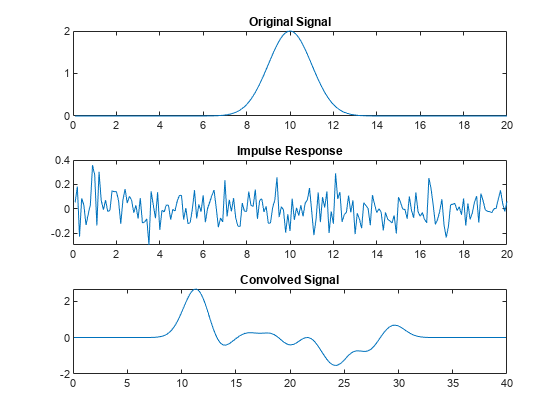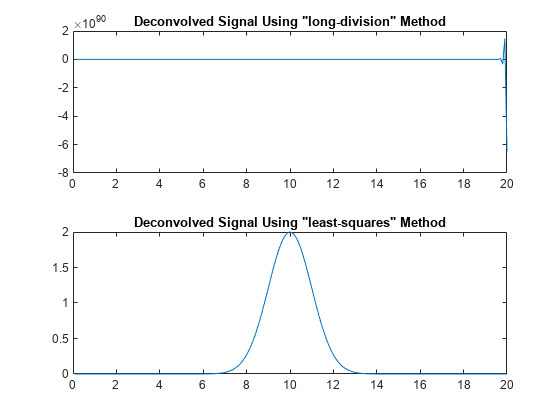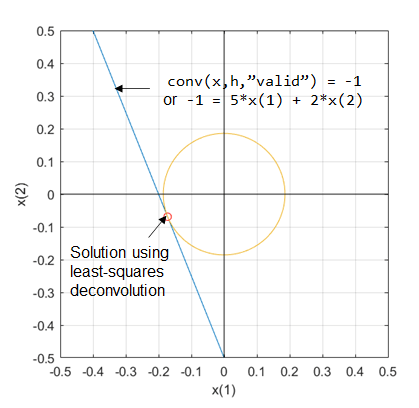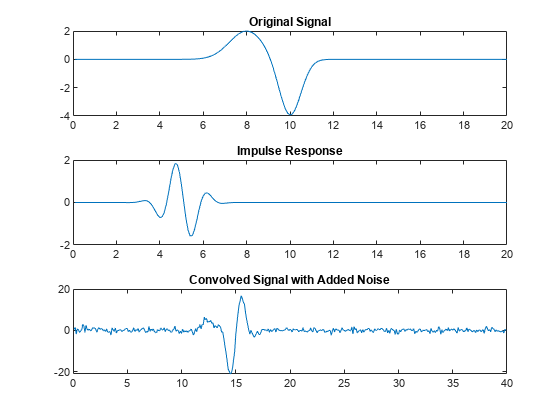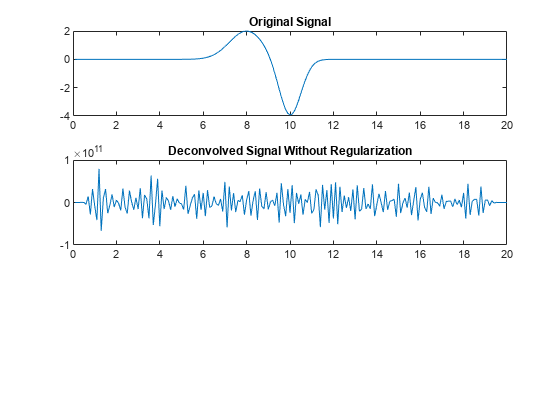deconv
最小二乘反卷积和多项式除法
说明
多项式长除法
最小二乘反卷积
自 R2023b 起
[ 支持上述语法中的任何输入参量组合,且可使用一个或多个名称-值参量指定选项。x,r] = deconv(___,Name=Value)
您可以使用
deconv(__,Method=algorithm)指定反卷积方法,其中algorithm可以是"long-division"或"least-squares"。您还可以使用
deconv(__,RegularizationFactor=alpha)将吉洪诺夫正则化因子指定为反卷积方法的最小二乘解。
示例
输入参数
名称-值参数
输出参量
参考
[1] Nagy, James G. “Fast Inverse QR Factorization for Toeplitz Matrices.” SIAM Journal on Scientific Computing 14, no. 5 (September 1993): 1174–93. https://doi.org/10.1137/0914070.
